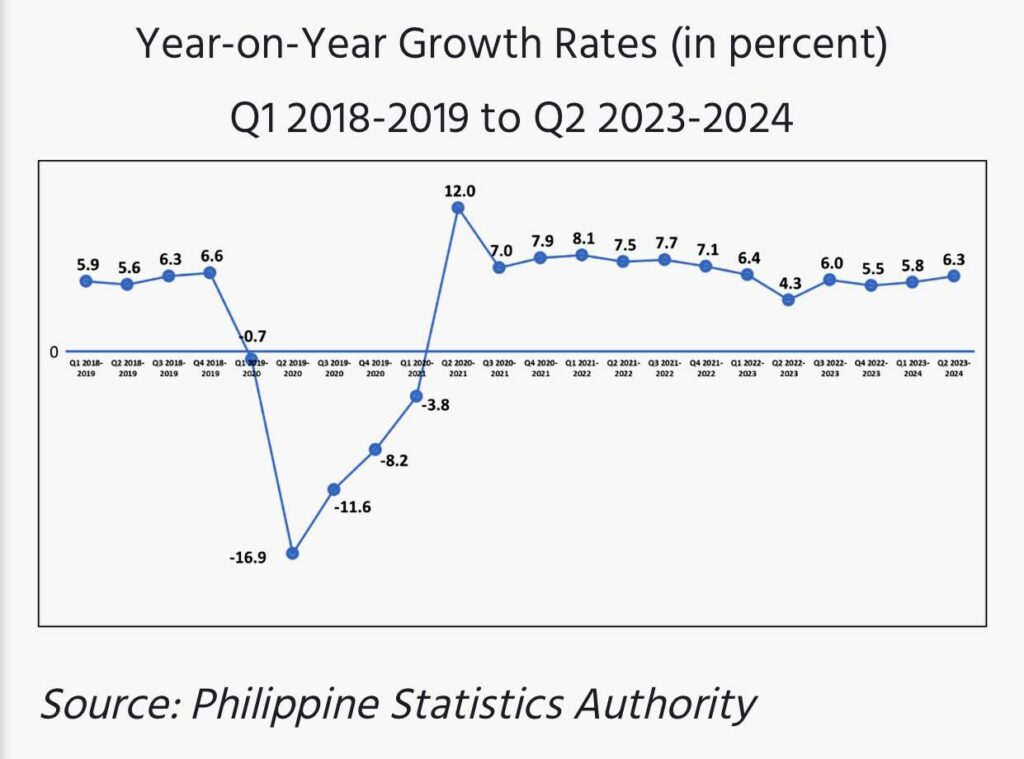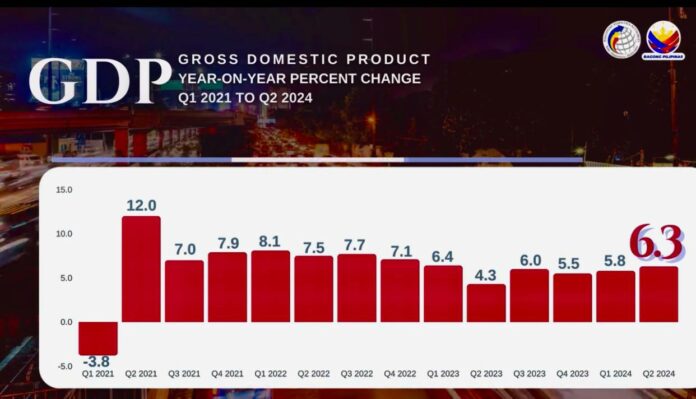The Philippine economy accelerated in the second quarter of 2024, fueled by strong performances in services and industry, which generated more jobs to sustain consumer spending to more than compensate for a downturn in agriculture caused by El Niño.
Gross domestic product grew by 6.3 percent in the April-June quarter, surpassing the revised 5.8 percent growth from the first quarter and marking the fastest expansion since the 6.4 percent increase in the first quarter of 2023.
“The Philippine economy has sustained its robust growth trajectory, demonstrating resilience amid various domestic and external challenges,” Economic Planning Secretary Arsenio Balisacan stated during a press conference. “This significant development brings our GDP growth to (an average) 6.0 percent for the first half of the year, keeping us on track to achieve our target growth rate of 6.0-7.0 percent for 2024,” he added.

The second quarter’s performance places the Philippines as the second-fastest growing economy in Asia, trailing only Vietnam, which reported a 6.9 percent growth.
In terms of contributions to GDP growth, services added 4.2 percentage points, and industry contributed 2.3 percentage points. Conversely, agriculture detracted 0.2 percentage points from growth. Industry expanded by 7.7 percent, while services rose by 6.8 percent. Agriculture faced a decline of 2.3 percent due to intensified El Niño conditions.
Economic Planning Undersecretary and National Statistician Dennis Mapa highlighted that the GDP expanded by 0.5 percent from the first quarter, buoyed by growth in construction, wholesale and retail trade, vehicle repair, and financial and insurance services.
On the demand side, household spending emerged as a key driver of economic expansion, growing by 4.6 percent year-on-year despite the ongoing challenge of high inflation, Mapa added.
Balisacan expressed optimism about the economy’s prospects for the second half of the year. He anticipated that growth could accelerate further with a potential interest rate cut by the central bank, influenced by expectations of a deceleration in inflation, which has remained elevated due to higher food and energy prices. He noted that growth might have been higher and poverty levels lower if inflation had been more benign and interest rates had been lower.
Looking ahead, Balisacan expects increased spending in anticipation of next year’s midterm elections and a recovery in agriculture from the adverse effects of the dry spell to support economic expansion in the latter half of 2024.







